Key takeaways:
- Drone mapping technology reveals complex landscapes and enhances decision-making across various sectors through detailed geospatial data.
- Aerial image editing combines technical skills and artistic vision, highlighting the importance of color, lighting, and perspective in conveying narratives.
- Organizing images and making initial adjustments helps streamline the editing process, while careful enhancements preserve the authenticity of the original scene.
- The editing journey involves storytelling, where each adjustment aims to evoke emotions and present a compelling narrative through visuals.

Understanding drone mapping technology
When I first delved into drone mapping technology, I was struck by its transformative potential. The way drones can capture vast landscapes with precision and accuracy felt almost magical. Have you ever wondered how a bird’s-eye view can reveal details that ground-level photography might miss?
How often do we underestimate the power of geospatial data? As I navigated the realms of aerial imagery, I realized that each captured photo holds layers of information—think elevations, topographic features, and even vegetation health. The ability to create detailed maps from these images not only saves time but enhances decision-making processes in various sectors, from agriculture to urban planning.
On my first mapping project in Zanzibar, I stood there, holding my breath as the drone soared upwards. The sheer beauty of capturing the intricate patterns of land and sea instantly connected me to the environment. It’s in these moments that I fully grasped how technology bridges our understanding of the world, turning complex terrains into comprehensible maps that can guide our next steps.
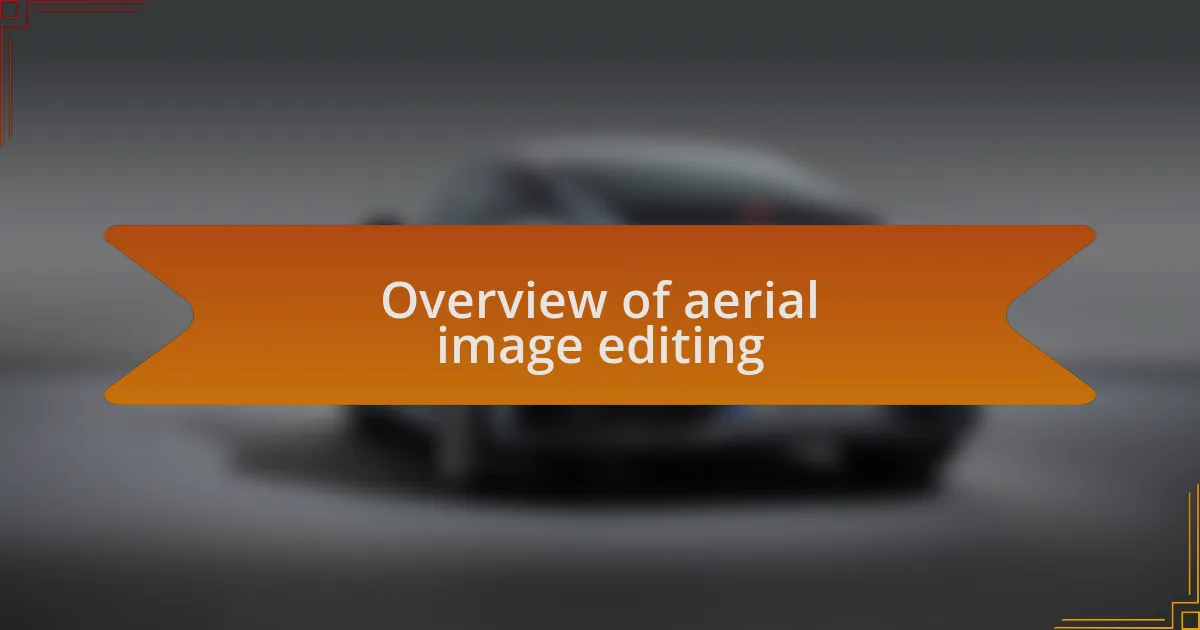
Overview of aerial image editing
Editing aerial images involves a blend of technical skills and artistic vision. After capturing striking visuals, I often find myself immersed in software that enables me to enhance colors, adjust contrasts, and sharpen details. It’s fascinating how a few tweaks can transform an image, revealing textures and depth that were subtle to the naked eye during the flight.
One of the most rewarding experiences I’ve had is working on post-processing to highlight Zanzibar’s stunning coastlines. As I edited those images, I could almost feel the gentle waves crashing against the shore and the warmth of the sun. This emotional connection makes the editing process not just a task, but a creative journey where each adjustment brings me closer to the essence of the landscape.
Have you ever noticed how different lighting can dramatically change the perception of a scene? During my editing sessions, I often play with various filters, exploring how shadows and highlights can tell a story. It reminds me that each image is not just a picture; it is a narrative waiting to unfold, and it’s my responsibility to bring that narrative to life through thoughtful edits.
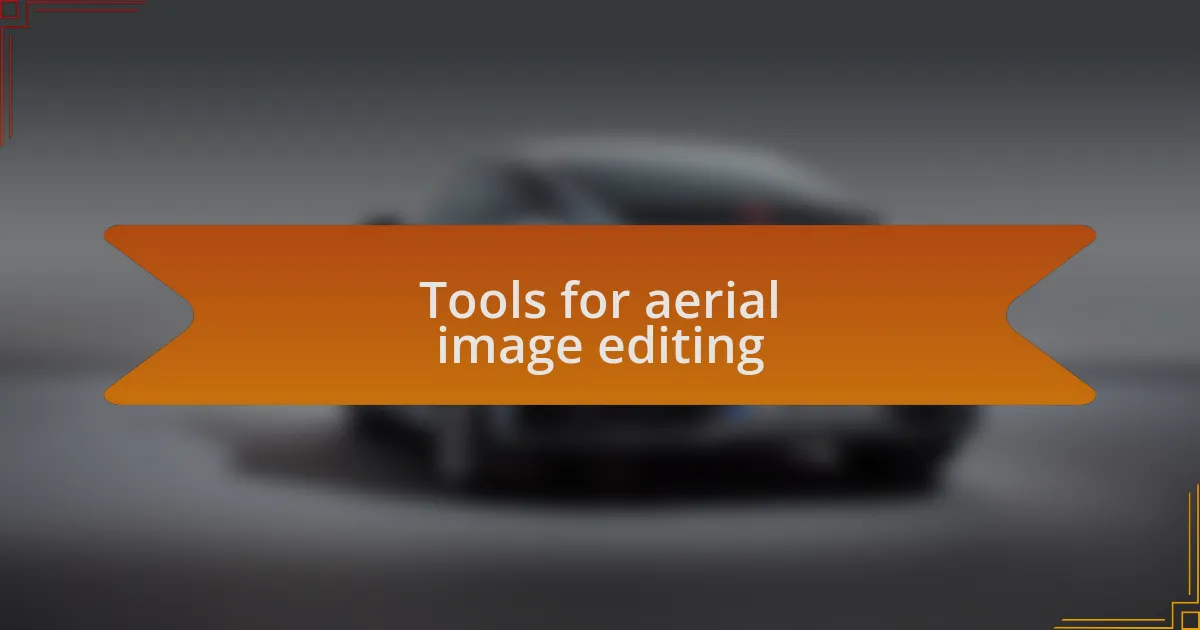
Tools for aerial image editing
When it comes to tools for aerial image editing, I often gravitate toward Adobe Lightroom for its intuitive interface and robust features. I vividly recall my first experience adjusting a bright Zanzibar sunset; the ability to tweak vibrance and saturation allowed me to capture the scene as I remembered it—rich and immersive. Have you ever experienced the magic of transforming an image simply by playing with sliders?
Another staple in my editing toolkit is Photoshop, particularly for advanced retouching. I remember a challenging day when I had to remove power lines from a breathtaking shot of a beach. Using the clone stamp and healing brush tools, I meticulously refined every detail. It’s moments like these that make me appreciate the artistry behind digital editing; they challenge my technical skills while reigniting my passion for storytelling.
Finally, I often explore plugins like Nik Collection for added creativity and unique effects. I found its color grading tools especially valuable when I wanted to evoke the surreal beauty of Zanzibar’s underwater landscapes. This added layer of creativity sparks an interesting question: how far can one push the boundaries of their images through editing? For me, the answer lies in experimentation and personal expression.
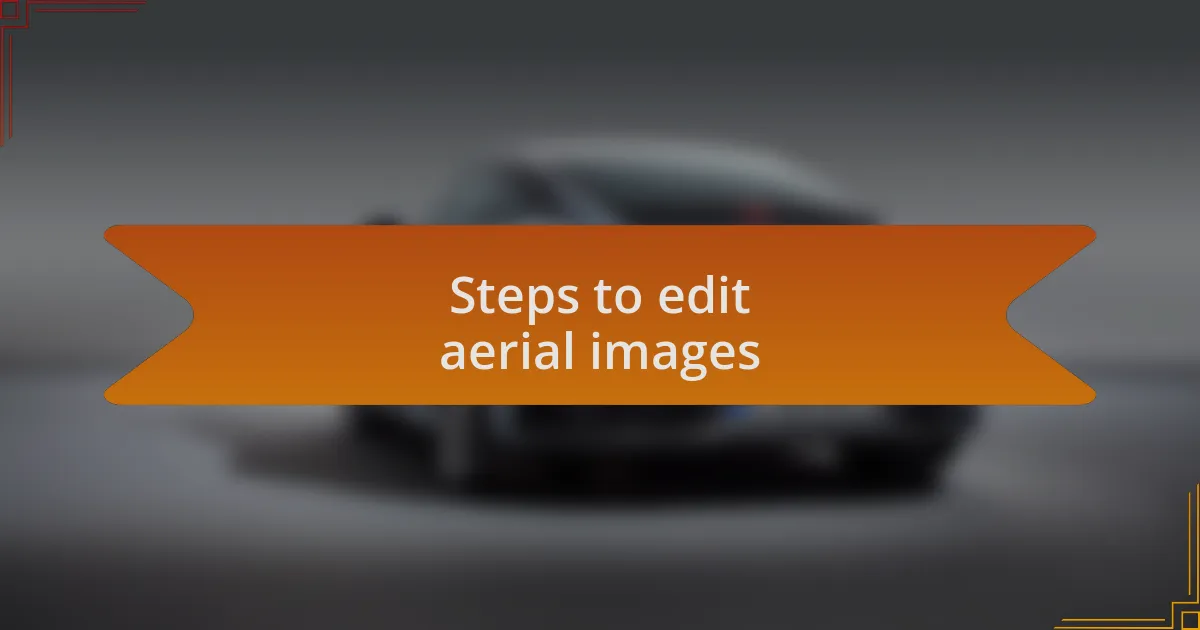
Steps to edit aerial images
When I start the editing process, the first step is organizing my images. I usually create folders based on the shooting locations, which makes it much easier to find specific shots later on. Have you ever spent too much time searching for that one perfect image? Trust me, a little organization upfront saves a lot of frustration down the line.
After organizing, I dive into initial adjustments in Lightroom. Here, I often focus on cropping and straightening images to enhance composition. One time, while editing an aerial view of a lush landscape in Zanzibar, I realized a subtle change in perspective completely transformed the image. It’s fascinating how a simple crop can redirect the viewer’s focus and tell a more compelling story.
Once I’m satisfied with the basics, I gradually move into fine-tuning details like exposure, contrast, and color correction. Just the other day, I felt a surge of excitement as I adjusted the highlights in a sunrise shot, allowing the colors to pop while still retaining the soft warmth of the morning light. Isn’t it amazing how fine details can evoke powerful emotions, pulling the viewer into the scene? Each adjustment is a step closer to showcasing the magic of aerial perspectives.
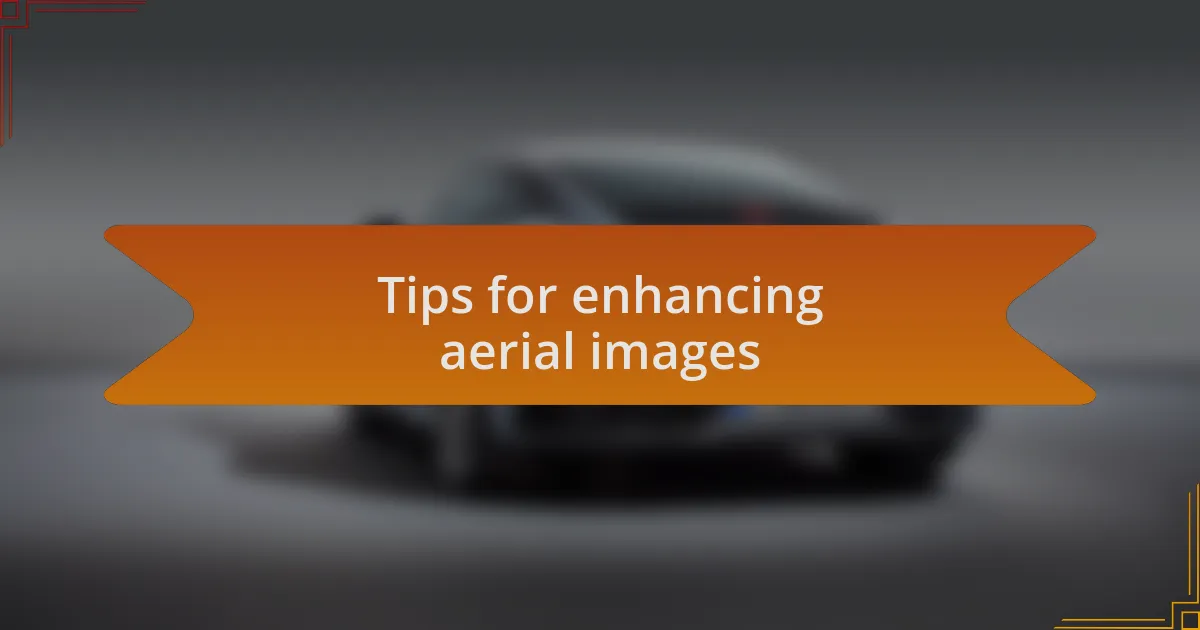
Tips for enhancing aerial images
To truly enhance aerial images, I find that the adjustment of saturation can make a world of difference. For instance, while working on a set of drone shots over the ocean, I noticed how boosting the blues made the water appear more inviting. Have you ever experienced a shot that just didn’t capture the vibe you felt in the moment? A subtle tweak in saturation can often unveil the essence of that moment.
Lighting plays a crucial role in aerial photography, and I’ve learned to embrace the golden hour. I still remember my first attempt at capturing a sunset over Stone Town; the soft glow transformed an ordinary scene into something magical. It’s a gentle reminder that the right light can breathe life into your images—what time of day do you feel most inspired to shoot?
Lastly, don’t underestimate the power of perspective. I once captured a stunning aerial image of a winding road from above, but after adjusting angles slightly, I revealed the curves in a way that invited the viewer to travel along the path. How often do we miss out on new viewpoints? Experimenting with different perspectives can unlock a fresh narrative in your imagery, making it a more dynamic viewing experience.
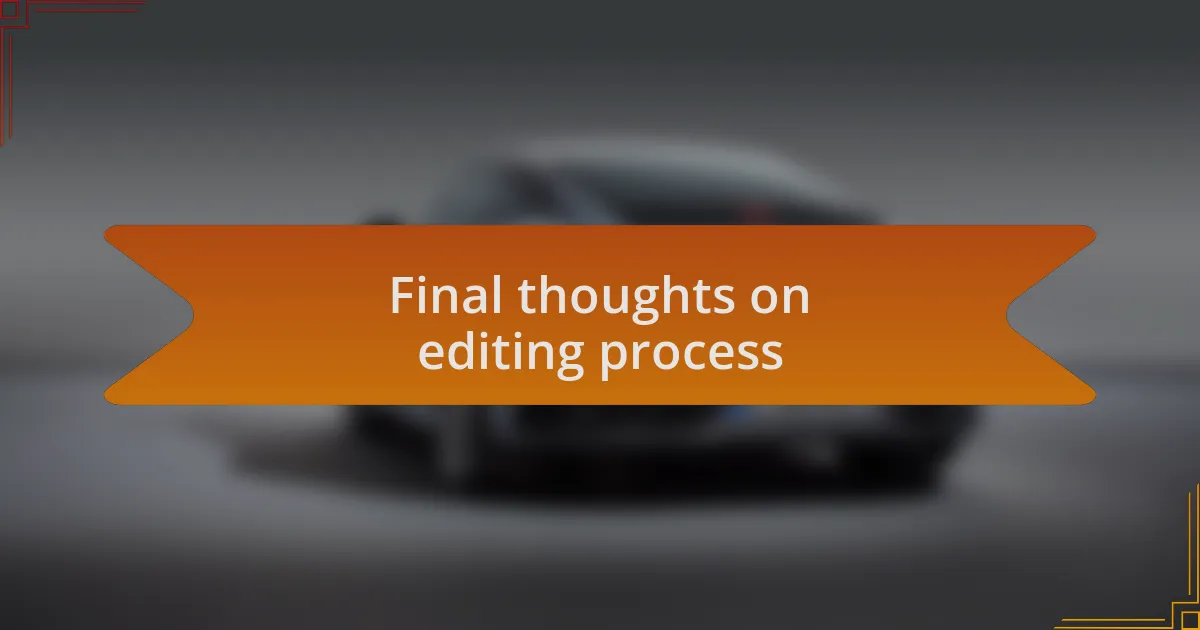
Final thoughts on editing process
When reflecting on the editing process, I think about the balance between enhancing a photo and maintaining its authenticity. In one instance, I edited an aerial shot of a lush green landscape, and while I was tempted to pump up the vibrancy, I hesitated, remembering the true colors of the scene. Isn’t it remarkable how a little restraint can lead to a more genuine portrayal?
Editing is not just about technical adjustments; it’s an emotional journey. I recall a time when I had captured a breathtaking view of the Zanzibar coastline, but the image felt flat initially. As I layered subtle highlights and shadows, it felt like I was coaxing the image to reveal the vibrant life that was present in that moment. Isn’t there something magical about unveiling emotions hidden beneath the surface of a photo?
Ultimately, the editing process taught me the importance of storytelling through visuals. I often ask myself, “What story do I want this image to tell?” By honing in on elements like contrast or detail during editing, I felt as though I was sculpting my experiences into art. How do you approach your editing—do you see it as a means of storytelling too?